
January 29, 2014
 Euro-Comics Special: Paul Karasik In Angouleme 02
Euro-Comics Special: Paul Karasik In Angouleme 02

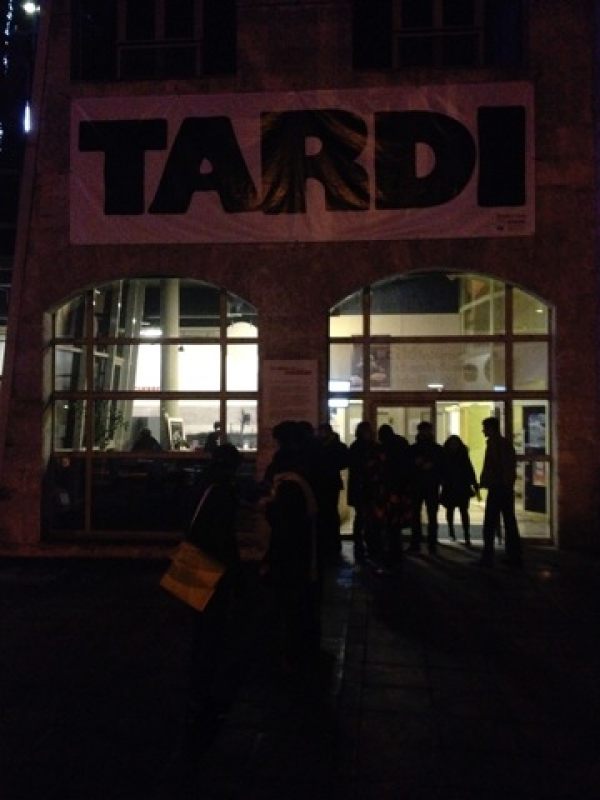 By Paul Karasik
By Paul Karasik
 Jacques Tardi and The Goddamn War
Jacques Tardi and The Goddamn War
The exhibition of work by Jacques Tardi in Angouleme this year is claustrophobic, poorly lit, and monotonous.
These very qualities make this a landmark exhibition, undoubtedly one of the best comics shows I have ever seen.
And believe me, I've seen plenty. In a minor fashion, I was involved in the Masters of American Comics exhibition that started at the Hammer Museum in Los Angeles, and so I have some insider's knowledge of how difficult it is to install a show of comic art.
Comics are meant for in-the-hand reading. The cartoonist works with that precept and the publisher obliges by making objects that you have to hold to read. The advent of electronic reading devices has made comics consumption an even more intimate experience.
This makes hanging comics on a wall a tricky proposition -- because you immediately objectify the original pages, whose design and function have been built on subjective manhandling.
The Tardi exhibition operates with a full understanding of this problem -- and uses that awareness to create a situation that forces the reader to embrace his powerful work in an intimate way.
Though the iconoclastic Tardi may not like to hear this, Tardi is an icon, an elder statesman of French comics who has worked successfully in many genres. But his most personal and forceful work are the hundreds of pages that he has spent chronologically chronicling the First World War in France.
The work is intense, brutal, gory, and unrelenting in its aim: to grab the reader by the lapels and lift him off the ground, shaking him out of the complacency that set in early after the Great War to matter-of-factly accept the unacceptable murder of thousands and the seismic ripple those deaths made through the generations.
And because of this, the Tardi exhibit is not a display of work but a continuation of one man's artistic mission.
At first the exhibit-goer may be put off by the space, which is claustrophobic. The walls are constructed of rough-hewn pine boards. The work is hung like lined-up dog tags. The lights emit a subdued incandescent glow, not dim, but not particularly illuminating. As you wander from space to space you may not be certain if you have already been in this gallery before. The soundtrack for the entire experience combines the sounds of a woman (Dominique Grange, Tardi's wife) singing songs of the era with a constant distant rumble of artillery.
Welcome to the trenches.
The work on the walls can be read as narrative sequences. In fact, each gallery space represents a different year of the war. But the experience can also be absorbed by tuning in and out of individual pieces: a body suspended in barbed wire, a child holding a pistol, smoke across the distant no-man's land. Either way, it's chilling.
2014 is the 100th anniversary of the start of the War, and Tardi will not let you forget it.
******
Paul Karasik is a cartoonist, author and educator best known for his work on
the graphic novel version of City Of Glass and for
bringing to a wider audience the work of Golden Age cartoonist Fletcher Hanks.
******
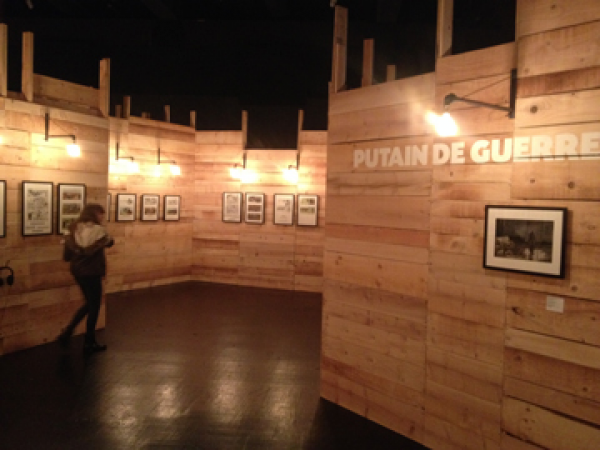
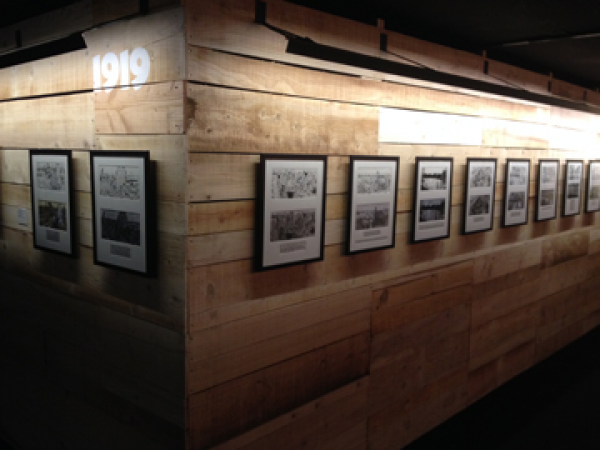
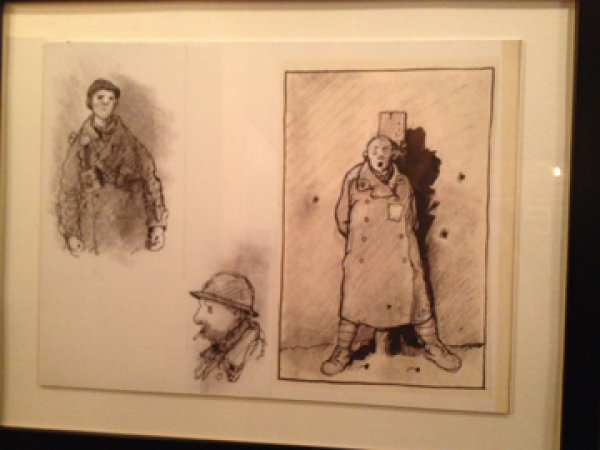

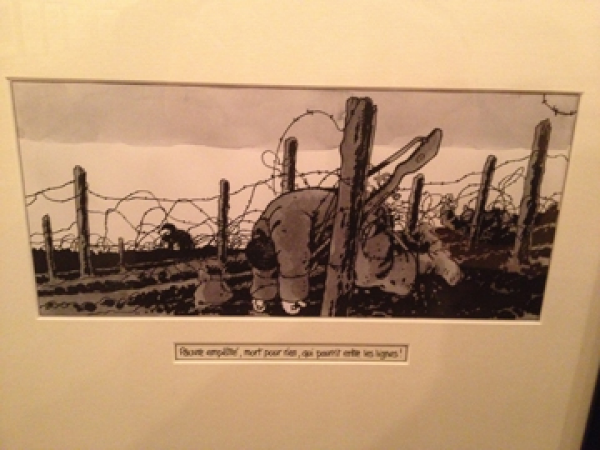
******
******
posted 4:00 pm PST |
Permalink
Daily Blog Archives
November 2019
October 2019
September 2019
August 2019
July 2019
Full Archives


